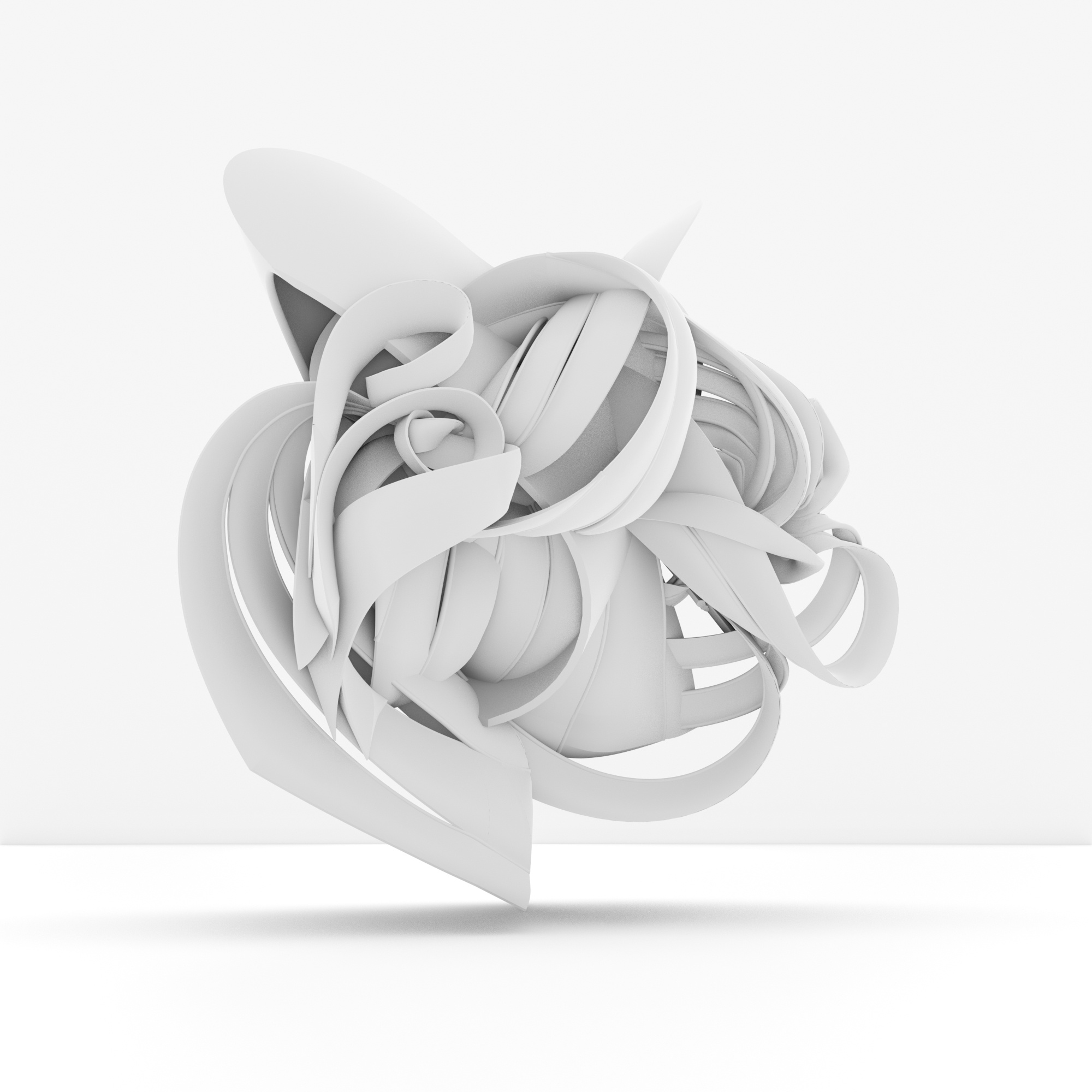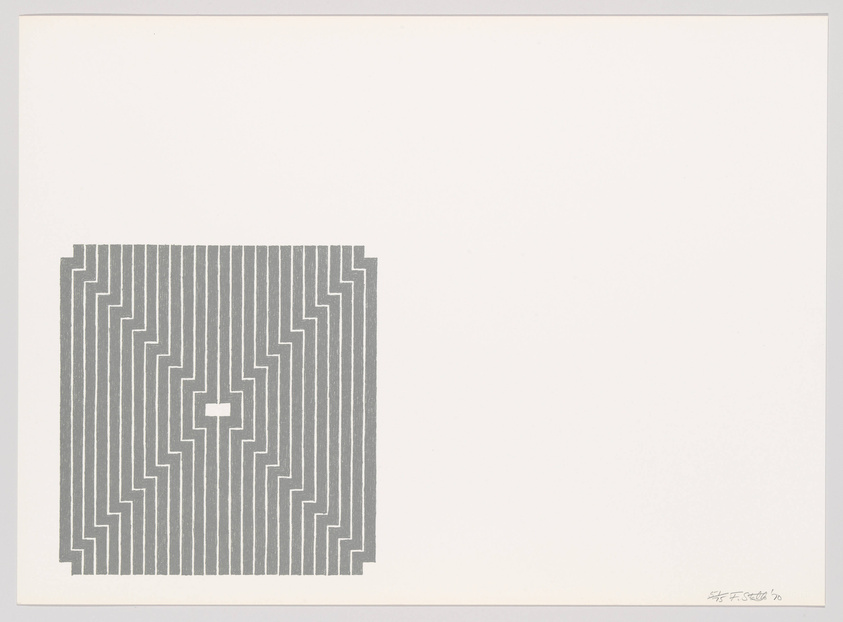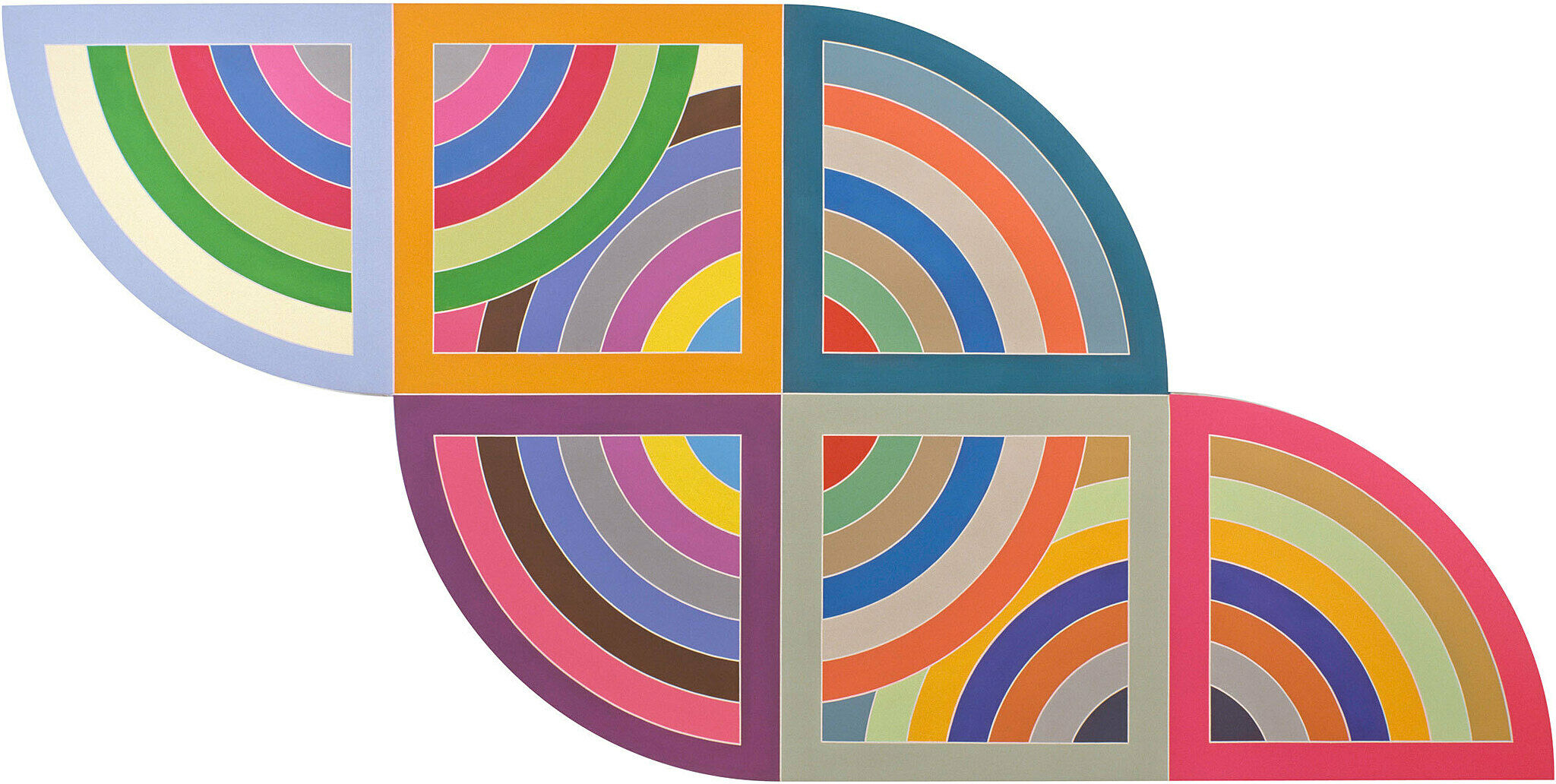Frank Stella, Avicenna, 1960
Oct 30, 2015
0:00
Frank Stella, Avicenna, 1960
0:00
Narrator: In 1960, Stella began working with aluminum paint, an industrial material intended for painting public railings and radiators.
Frank Stella: The shininess and the metallic quality seemed, I don’t know, to make a surface that was not exactly repellent, but resistant to your perception, or to the way you felt about it. And I felt that, you know, although the Black Paintings, they were sort of thicker and heavier. These paintings seemed lighter and more fragile, and in that sense they seemed to me more abstract, they were less physically present in a way.
Narrator: Stella’s stripe paintings were all based on diagrams. The ones he used for the Aluminum Paintings were a bit more complex than the ones for the Black Paintings. They didn’t follow the rectangular form of the canvas. But Stella found that he did want the stripes to repeat the canvas’s overall form―so he shaped the canvas to line up with the painted design. In this painting, Avicenna, he cut a hole in the center that allowed the wall to show through.
Michael Auping: This was a very new thing for painting to have a hole in the center of your painting that was as much about the wall almost as it was about the painting.
Narrator: Michael Auping.
While these designs moved in your eye back and forth as an illusion, these lines moving inward or outward, then you saw the wall in this hole and it stopped everything. It stopped you in your tracks to see the painting almost less as a painting and more as an industrial painted object.



